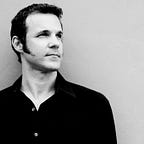5 Questions Businesses with Empty Office or Retail Spaces Should be Asking Themselves
A few months ago, while working on a K-12 school’s greenhouse gas inventory, the students we were working with noticed that the greatest amount of energy usage came in December…at a time when the school was shut down for half the month for the December break. Even after we confirmed there was a cold snap during that period, it begged the question “Why was energy spiking when people weren’t there?” And “Was there any unoccupied mode policy in place for periods when the school was out of session?” It turned out there wasn’t, and this was immediately the first energy and carbon reduction initiative we undertook with the school.
Even before coronavirus / COVID-19, the school story left us wondering in general, did other places have such opportunities to implement unoccupied policies? In general, though we realized that most businesses do not have unoccupied periods with the exception of schools and maybe some seasonal or tourism types of businesses. But now, with COVID-19, an entire swath of the country and economy is now vacant. And the majority of these organizations would have had no reason to have any unoccupied policy prior, so the likelihood of there being a policy already in place is low.
All of this left us wondering what business can be doing now to conserve. As budgets get tight, every cent on utilities could be important to the bottom line. Below are some potential questions business can be asking themselves during this unprecedented time:
- Do we have an ‘unoccupied mode/policy’ and have we implemented it? If there are no occupants in a space, there is no reason to be heating or cooling to normal levels. Energy consumption can be significantly reduced during these times through changing of thermostats. More complex buildings may have Building Automation Systems that can control all of this electronically. But many buildings and spaces will just have thermostats on the wall. It will be key to locate all of the thermostats, and also make sure they are set into a “hold” mode. If they are programmable thermostats on schedule, just setting it to a temperature without hold means that the temperature will just set back to the regular schedule at the next programmed interval. Temperature settings will vary whether you are in heating or cooling mode, but in general, the concerns in colder temperatures is to avoid freezing, and in warmer temperatures is to make sure the A/C comes on periodically enough to dehumidify (note that special equipment can sometimes require specific temperatures or humidity levels so it is important to check with everyone). Some more sophisticated buildings may be equipped with humidistats which can allow for dehumidification separate from needing the cooling. But, the important process is to (1) establish the policy (including how to return back to normal operations), (2) assign someone to be responsible for implementing it, and (3)implement it.
- Are there any lights that don’t need to be on? It drives me crazy when I pass an office building at midnight and see lighted squares throughout the façade. I don’t believe all of those people are working, or that cleaning crews are still working that late. Has anybody gone back through and checked for any lights that are left on? Be sure to check closets, bathrooms etc.
- Is any computer equipment on that doesn’t need to be? This probably needs to be the IT department’s purview, but there is probably a lot of equipment in a typical office that is left on regularly that does not need to be on right now. Printers, fax machines, monitors, copy machines and more can all be set in the permanently off mode. Some people may even have left desktops on. However, again IT would want to determine what computers can be turned off because many people are using remote desktop systems to access their work computers from home. The office computer obviously needs to be on in that scenario. However, note that the monitor for that computer doesn’t need to be on.
- Are there any extra personal devices at workstations? It is not uncommon for people to use space heaters under their desks to keep warm (even in summer months in overcooled buildings) or fans. Aside from the potential energy drain of heaters running unnecessarily, they present a fire hazard. It is possible people have other energy consuming devices as well such as personal printers or scanners, extra lighting etc.
- Is there anything we can learn from this data? Clearly this situation is completely abnormal and the hope is that sooner, rather than later, we can all get back to some sense of normalcy. However, track the data. Even if you do not have an energy management system that can track usage, most utility companies can provide daily usage data overlaid with temperature data. After you have implemented your policy, you can compare usage during this period to usage from prior occupied days. If you find days with similar temperatures, that will allow for apples to apples comparisons. You may see some trends and possibly significant reductions. While hopefully your business will not need to enter this mode for lengthy periods again, it begs the question about weekends, three-day weekends, holiday breaks, or even other shorter periods of closure due to storms or other events. There are approximately 104 weekend days each year. Add in holidays and other closures and a business may actually be closed between 110 and 120 days per years, which is at least 3.5 months! Can your business apply anything learned during this period to implement on those days? If you extrapolate data as noted above, you could even estimate usage reductions and cost savings over the course of a year.
